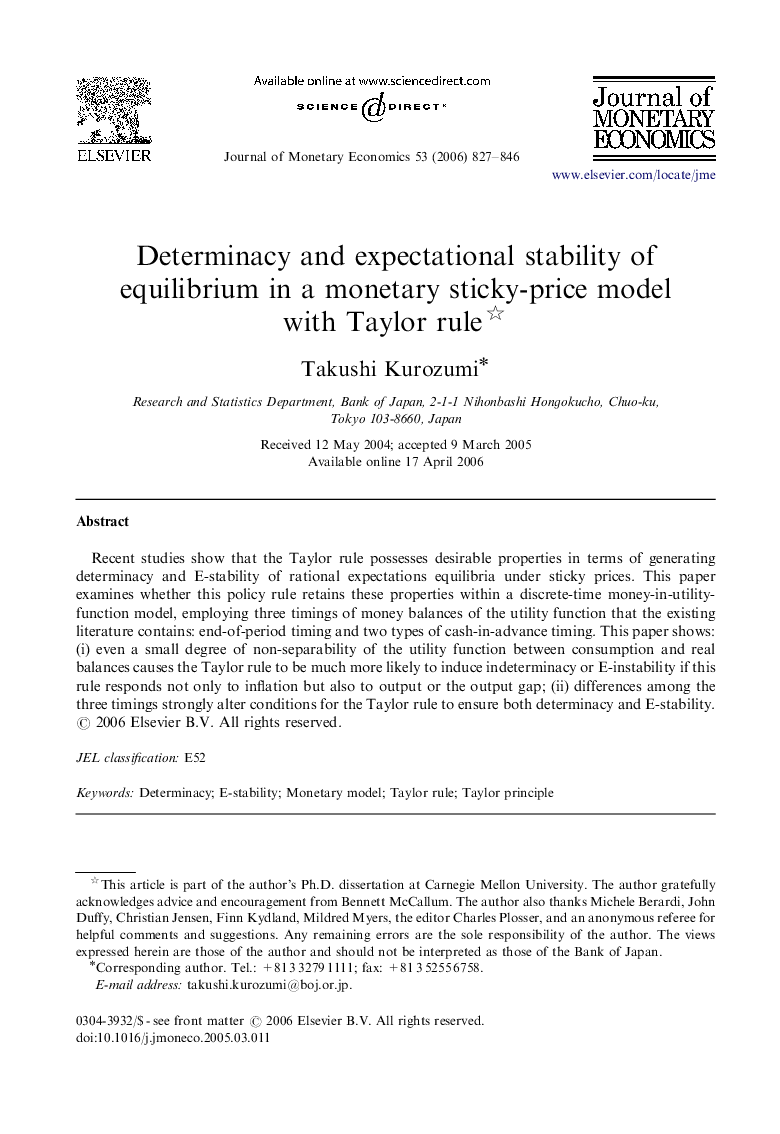| Article ID | Journal | Published Year | Pages | File Type |
|---|---|---|---|---|
| 967649 | Journal of Monetary Economics | 2006 | 20 Pages |
Abstract
Recent studies show that the Taylor rule possesses desirable properties in terms of generating determinacy and E-stability of rational expectations equilibria under sticky prices. This paper examines whether this policy rule retains these properties within a discrete-time money-in-utility-function model, employing three timings of money balances of the utility function that the existing literature contains: end-of-period timing and two types of cash-in-advance timing. This paper shows: (i) even a small degree of non-separability of the utility function between consumption and real balances causes the Taylor rule to be much more likely to induce indeterminacy or E-instability if this rule responds not only to inflation but also to output or the output gap; (ii) differences among the three timings strongly alter conditions for the Taylor rule to ensure both determinacy and E-stability.
Related Topics
Social Sciences and Humanities
Economics, Econometrics and Finance
Economics and Econometrics
Authors
Takushi Kurozumi,
